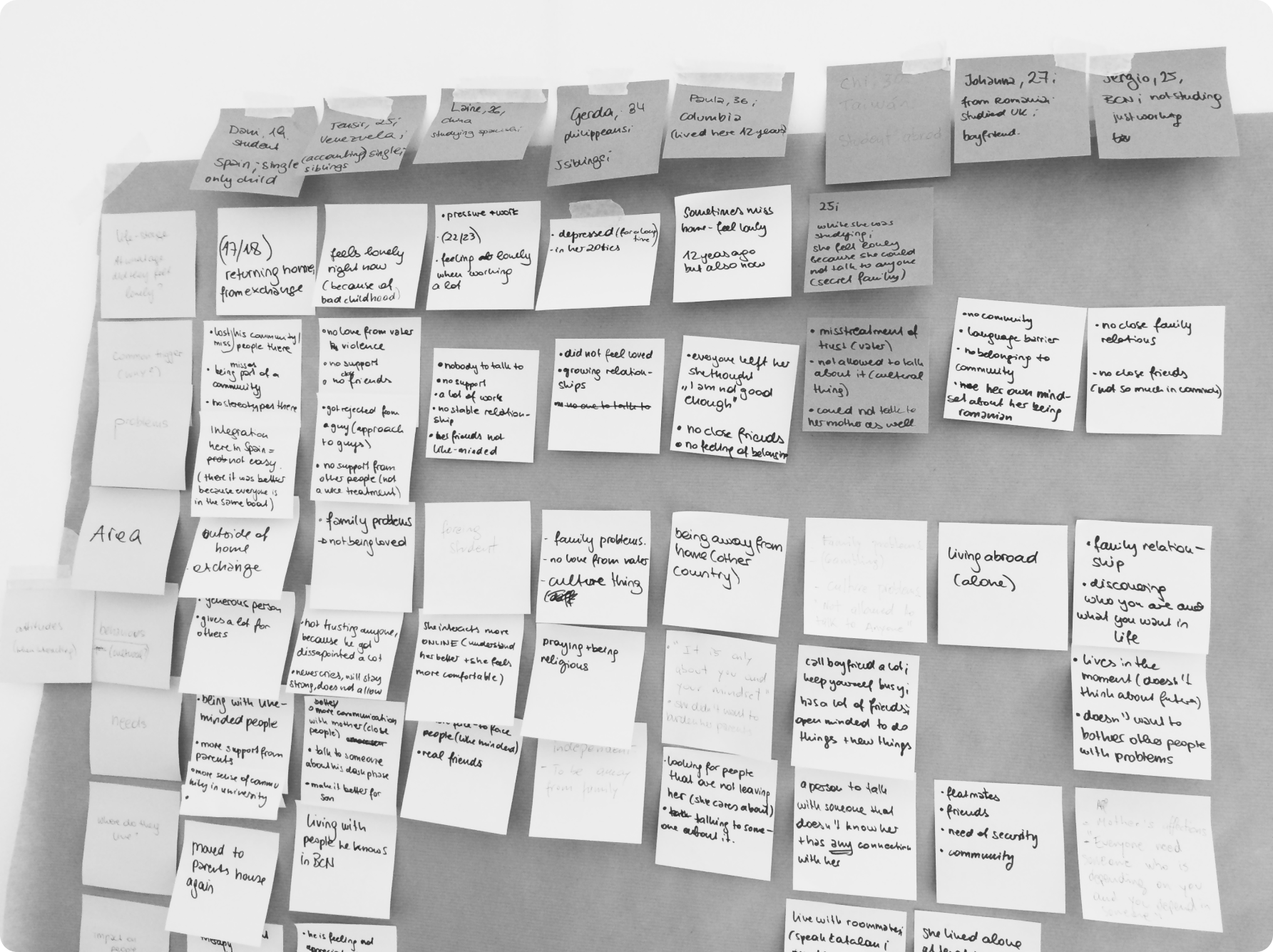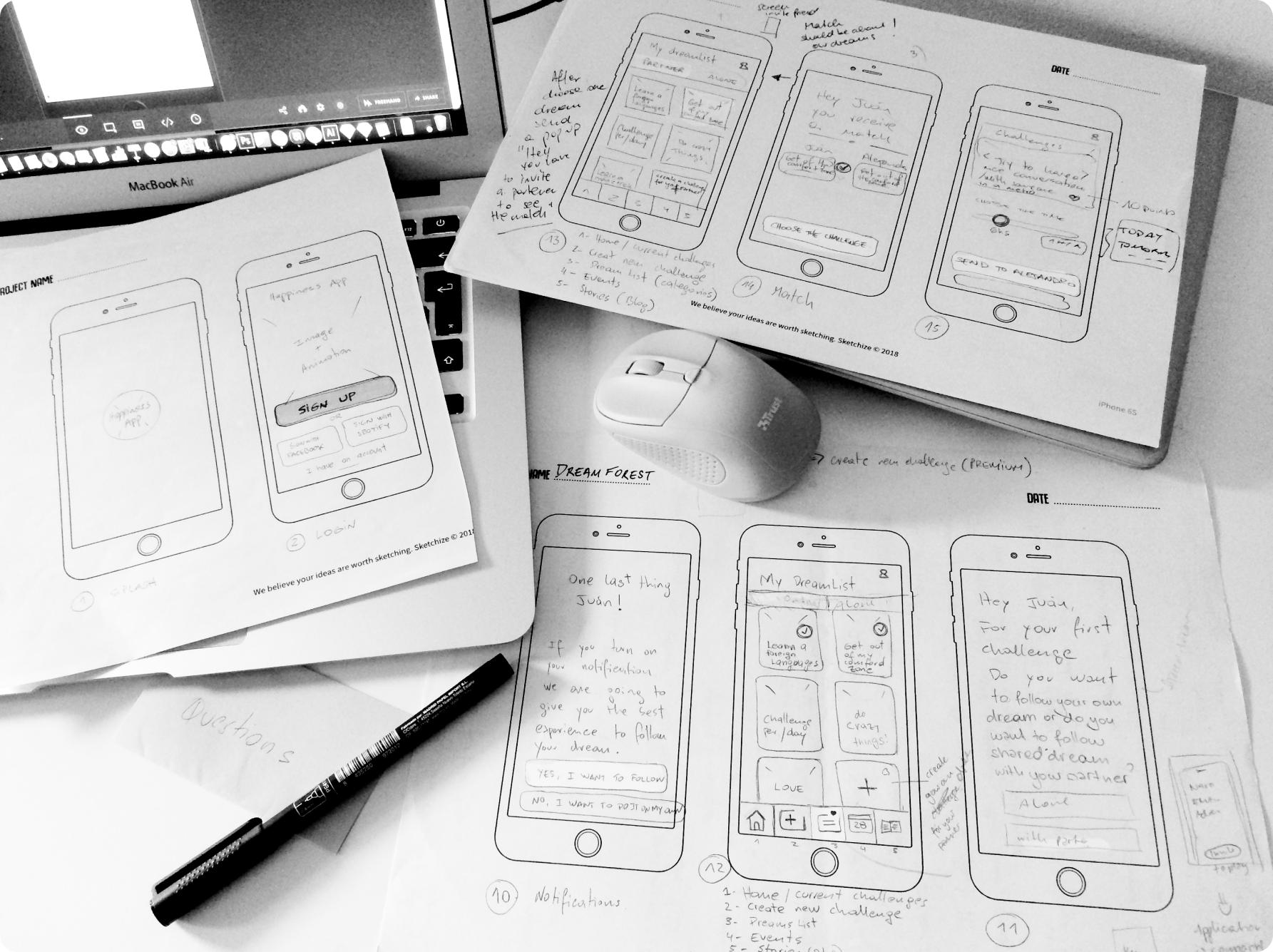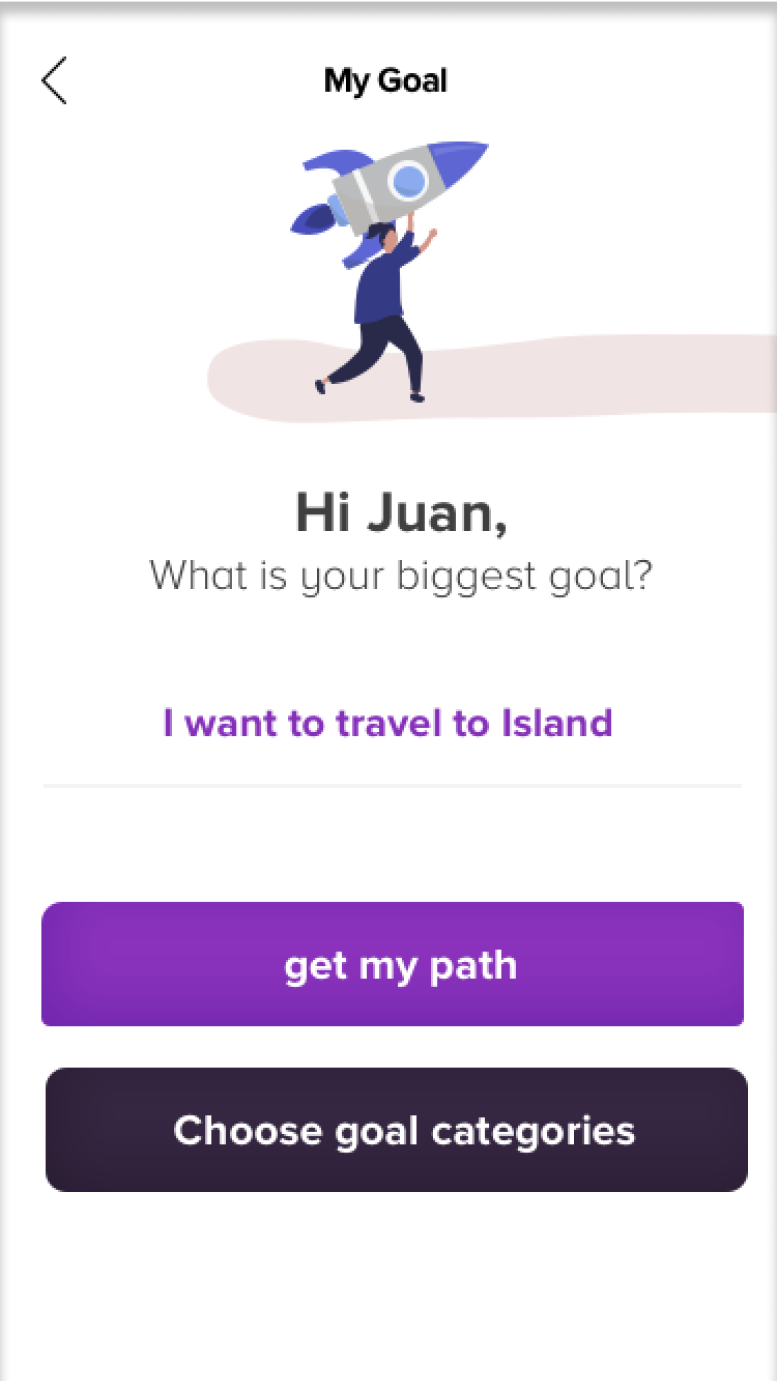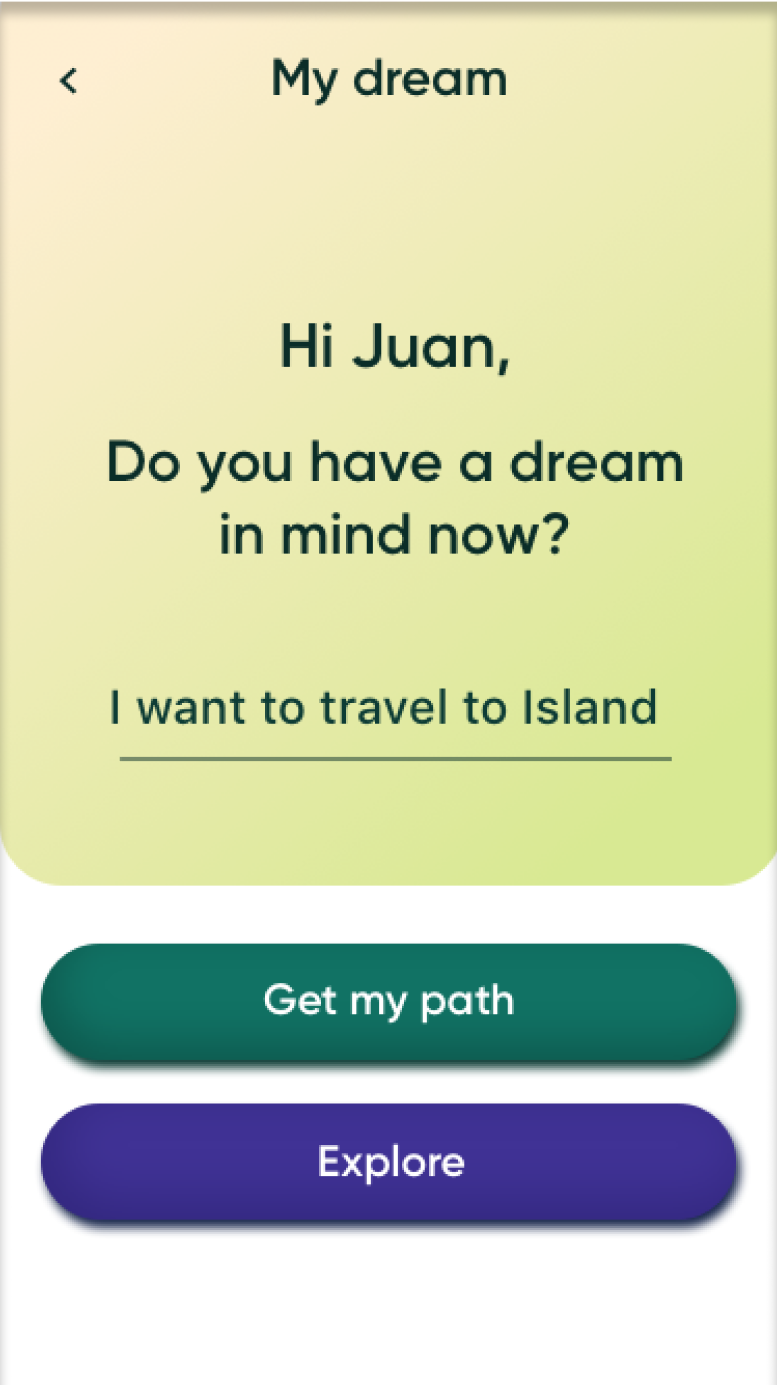Design thinking methodology
 Empathize
Empathize
 Define
Define
 Ideate
Ideate
 Prototype
Prototype
 Testing
Testing

Empathize
Our objective at this stage was to discover what the needs and problems are, their behavior and how they feel when they are in a relationship.
We interviewed 12 people
We define extreme users

Define
At this stage we create groups, define our most important insight, create a person and define our powerful challenge.
Insight: “Love yourself, knowing what your dreams are and follow them”


Ideate
In the first instance we decided with the team to use the Alter Ego technique to start as inspiration to later on apply different techniques:
Why Alter Ego? Because is one of the best techniques to start with famous people, well known companies, figures, movies and create all of the possible ideas in a short period of time.
What if? This kind of questions introduce limitations and are really good to create incredible and unexpected ideas. Example, What if everyone must get married before 30?
Why Teamstorming? We pick random ideas from the canva and later create the opposite idea + extracting it. Also, in a single round we created the worst possible idea.
As a conclusion, two main ideas:
1. Dream Bucket List
Create your dream bucket list and match with your partner, if there’s a match, you can do it together. If not, you can still do it on your own.
By finishing the challenges that relate to your dreams, you might win rewards like free air tickets that are related to your dreams.
2. Lover Calendar
Starting from day one: couples write their dreams (with deadline), hobbies and important dates. The application recommends activities based on the match of their similar hobbies.
Also, set a countdown of their dreams and remind each other to keep progress on the dreams (e.g. couples can book the events together).

Prototype
Low fidelity prototype
First, we create the task flow with our main ideas:
A journey to design your dreams.
1. Personality Test
2. Choose categories based on Interests
3. Pick a challenge to start
4. Follow clear step by step instructions, can adjust through
the reminder.
5. Points are provided after challenges are completed.
6. Share a story after completion
7. Create your dream bucket list or Invite your partner to do it
together.
We start with our first wireframe, with pencil and paper.
In the first instance we asked the user questions to personalize their own dream but after testing it we decided to eliminate it, since many users commented that it did not seem necessary or that there were too many steps to start a new challenge.
In the second instance, we created a low fidelity interactive prototype to test.
Medium fidelity prototype
On the feedback received in the first session we made some changes and proposed an interactive prototype of medium fidelity.
At the beginning we showed a tutorial explaining what the application offers: including login, write the dream or select a category and choose one challenge.

High fidelity prototype
We were improving the application on the feedback received with the users. Undoubtedly, the more testing we do, the better our product will be.
The last iteration of testing is done with the prototype in high fidelity where we keep making small changes.









Testing
Feedback
What people said:
People like the idea of “baby steps”, they said it might help more to get to know about themselves and were curious about the challenges.
An interesting feedback from some users was that they said the app is about Experience rather than dreams. Instead of dream list, they feel it’s more like an interest list.
Almost everyone gave negative feedback on having to Sign up as a first step. They needed to know WHAT exactly is the app about first.
Most people said they would like the notifications to be adjustable by themselves, but like the idea of gettings tips related to their challenges.
Everyone said they would probably try it alone the first time, if it's good they would invite others to do it together, but the word “Alone” is like a hint of loneliness for users.
We started the first testing session with 5 people, after receiving good feedback we made some changes. For example, we changed the login options and eliminated questions to personalize the dream, changed the notifications.
The most imporant feedback was that all the users told us they would firstly use and explore the application alone, to maybe later invite a partner to follow a dream in common.


Onboarding flow






Main features

Reflection
We started the first testing with papers, then we generated a drawn prototype and we asked questions to know and learn more about our users.
In the first tests we explained more than we should have to the users, and many times we did not let them navigate the prototype by themselves. I would have been better to let them read the information on the screen and then ask us questions.
In all sessions we recorded a video, took photos and/or recorded the audio to be able to check the information later and continue improving.
We always had very good feedback from users. In many cases they asked us if after the project we would implement the application, which motivated us to continue with the project in a good mood.

